Google’s Quality Rater Guidelines is that document. Unfortunately, it’s 172 pages long. So in the interest of saving your sanity, I decided to read the entire thing and just tell you what you need to know.
Here’s what you’ll learn in this guide:
Google’s quality raters are a team of anywhere from 10-100k people that Google has hired. They determine how well Google’s search results solve a user’s needs.
Google uses their feedback to help understand the impact of algorithmic tweaks. The guidelines don’t directly affect the algorithm or rankings, but Google said in a CNBC interview that the guidelines “fundamentally show what the algorithm should do.”
Google’s quality guidelines tell quality raters exactly how to evaluate a search result. These are all laid out in the 172-page document.
The document has three main sections:
- Page Quality Rating Guidelines – This section explains the main factors that quality raters should look for in the search results. These include the purpose of the page, E-A-T signals, content quality, ownership of a website, and the website’s reputation.
- Understanding Mobile User Needs –This section breaks down how Google views mobile interaction.
- Needs Met Rating Guidelines – This scale evaluates how well a search result solves mobile user needs.
Not every section of the 172-page document is helpful for SEOs. And the sections that are helpful aren’t obvious. But dig deeper into what Google says about each topic, and you can extract valuable intel.
So here are the main takeaways:
Pay attention to what other sites say about you
With a mix of cynicism and wit, Google lets raters know that “many websites are eager to tell users how great they are.” So Google directs its quality raters to evaluate reputation not only on the site itself but also by looking off-page.
The guidelines instruct raters to look for mentions of a site or author in external “news articles, Wikipedia articles, blog posts, magazine articles, forum discussions, and ratings from independent organizations,” so you should too.
A quick search for your site on Google -your domain will show you what others have written about your brand:
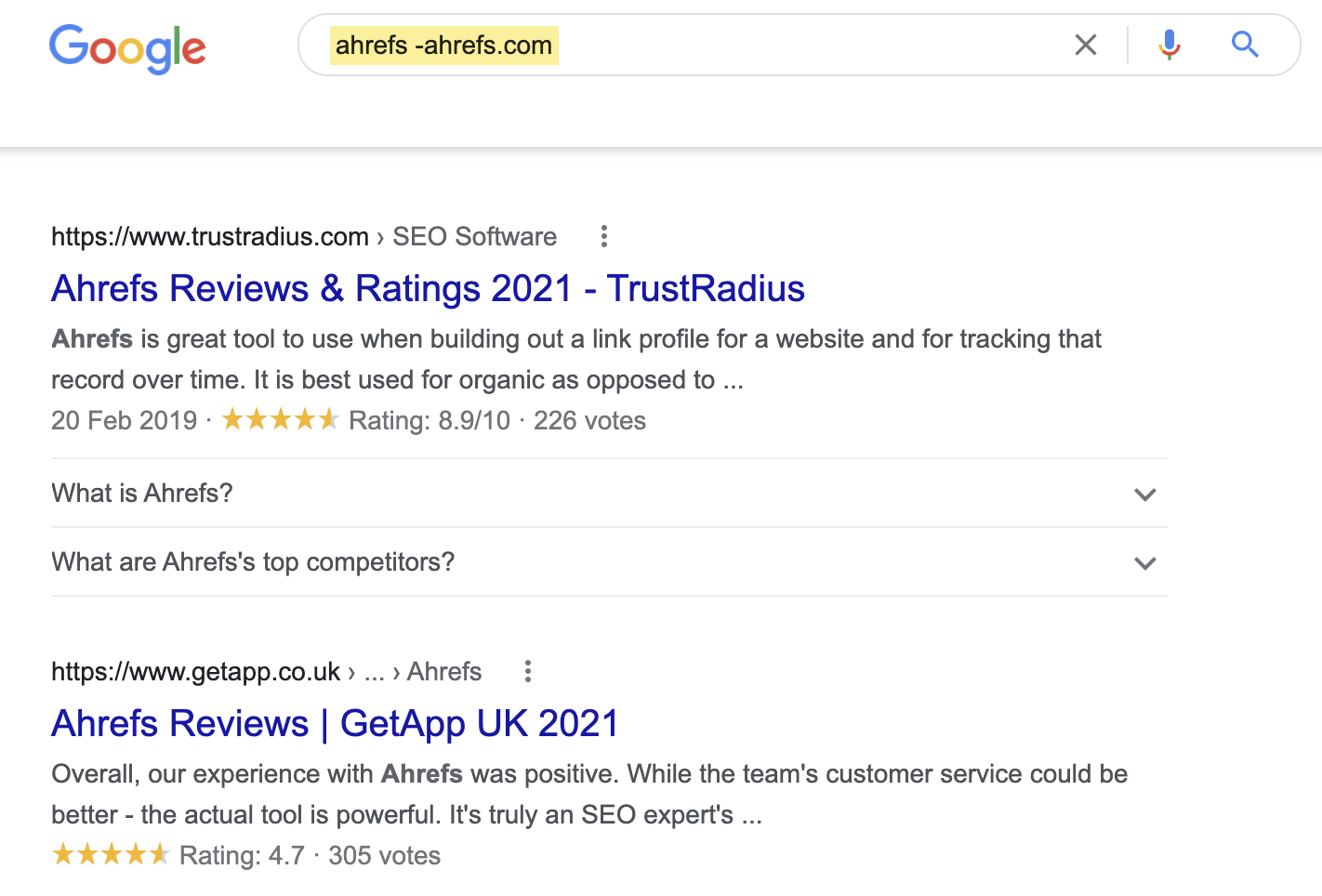
You can also check the backlinks to your site using Site Explorer to understand how and where other sites are mentioning your brand.
This exercise is not only useful for seeing how others view your site/brand but also for uncovering weaknesses in your products or services.
Address positive and negative reviews
Another big piece of online reputation management is keeping tabs on review sites like Yelp, Better Business Bureau, Amazon, and Google Shopping. Google mentions these specific sites in the quality rater guidelines as ones that raters should use to judge reputation.
Instead of ignoring negative remarks and reviews, address them head on.
Negative reviews can prove to be an invaluable source of information on ways to improve your customer service, information on your site, or your product offering overall. This is likely to help SEO and increase the odds of you retaining and attracting new customers over time.
Show off your expertise
This may come as no surprise to most SEOs, but Google talks about E-A-T a lot in the guidelines. E-A-T, which stands for expertise, authority, and trust, is one of the primary signals of quality content.
I find Google’s instructions for quality raters to be the clearest directive for SEOs:
Think about the topic of the page. What kind of expertise is required for the page to achieve its purpose well?
If you properly answer the “expertise” question, you should naturally cover authority and trust as well. Depending on the industry, this may mean formal expertise, like a medical degree if you’re giving medical advice, or hands-on expertise, like years of experience helping clients to rank websites if you’re giving SEO advice.
In terms of demonstrating that expertise, here are a few actionable tips Google alludes to in this great post about E-A-T:
- Provide clear sourcing for information
- Provide background information for the author or website with links to an “author” page or “about” page (more on this below)
- Demonstrate your expertise or enthusiasm in your content
- Ensure your content is free from easily verified factual errors
But be careful because not all industries are the same. If you are unsure what “expertise” looks like in your industry, look to top-ranking sites to understand how they are showing off their expertise.
Clarify who is responsible for information on the page
Google admits that not every kind of website requires the same expertise. But it does require quality raters to confirm “who is responsible for the information.”
For blog posts and other informational content, you can do this by specifying the author of each page and adding a short bio, as we do:

Remember that although a page author may not need “formal” education in the field, it should be clear why they are writing about a specific topic and why you should trust them.
Update your “about” page
Not every site has a blog or needs author bios to show who is responsible for the information. If your site doesn’t have a place for an author, be sure to update your “about” page. This way, users can find out things like who you are and how to contact you.
For example, the California Department of Public Health doesn’t have a clear place for a blog or authors, but its “about” page contains this information. The reader can clearly tell who the information is coming from and why they are trustworthy.
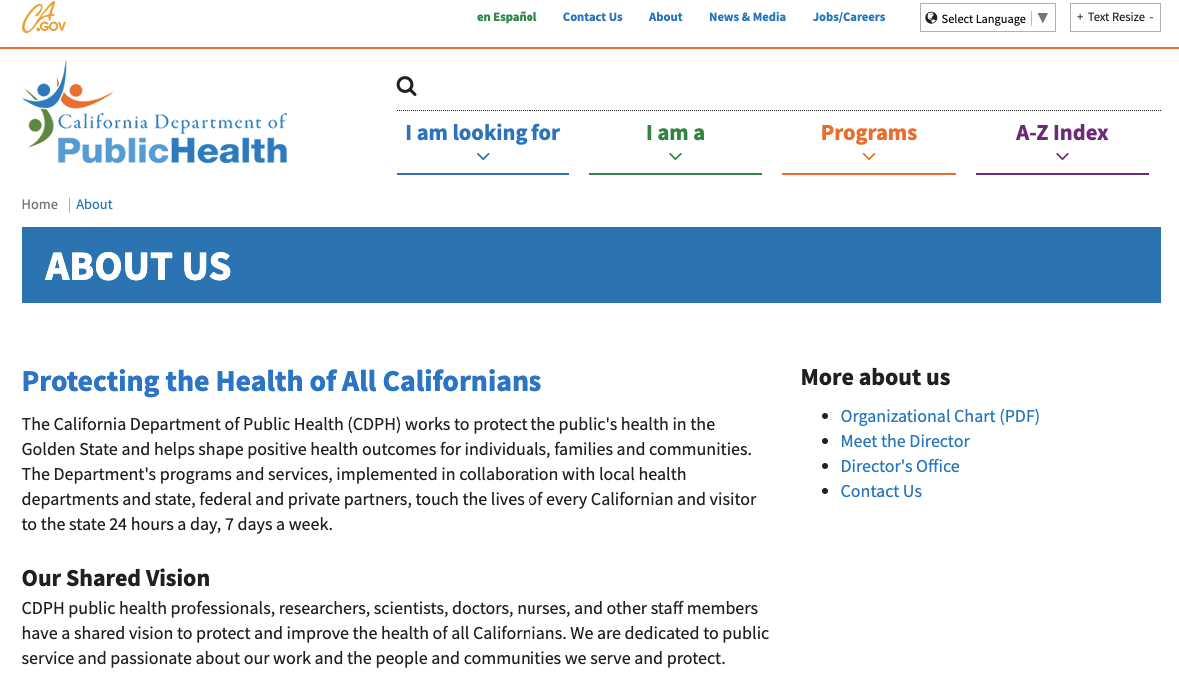
Add extra E-A-T signals for YMYL sites
Google specifies a type of page or site as Your Money, Your Life (or YMYL). These are sites that “impact a person’s future happiness, health, financial stability, or safety.” These include:
- Health + fitness
- Safety
- Shopping
- Finance
- Government or law
- News
- Groups of people (specialized groups like disability, nationality, veterans)
- College
- Jobs
Google’s quality guidelines ask raters to pay closer attention to the quality of information from these sites.
For instance, fact-checking articles and displaying review processes are widely used best practices in the health and medical space. Healthline’s articles have author names—which link to bio pages—and fact-checking signifiers to help prove their E-A-T.
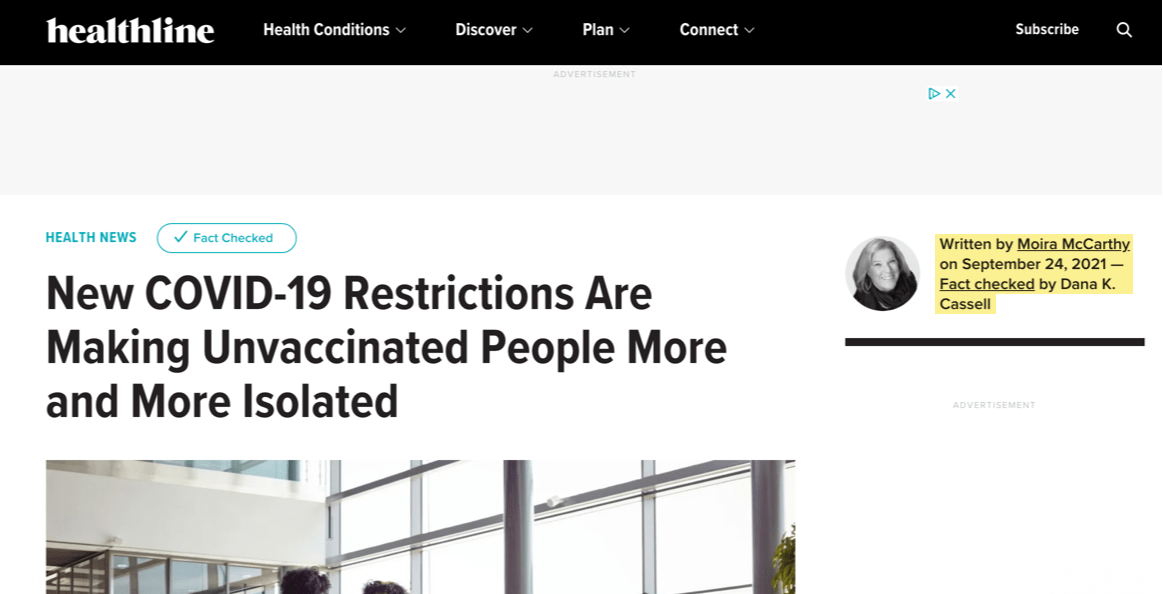
You can and should also back up your claims with other expert opinions—especially with YMYL topics. Take this example from House Beautiful below in the home remodeling space. House Beautiful does have good E-A-T signals, but it also added an expert quote to the article to help enhance its information.
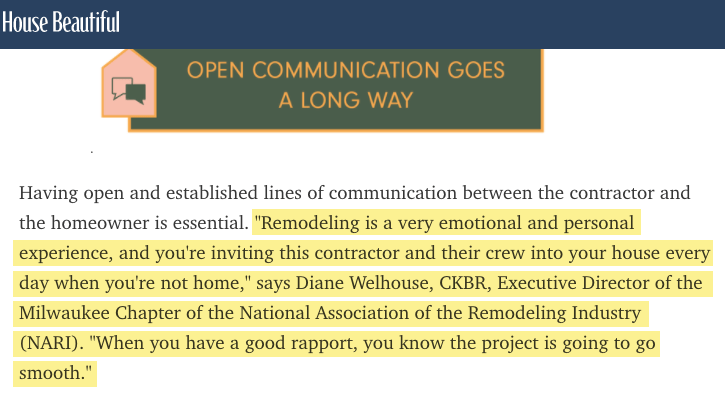
Ensure your site features work after a few clicks
Google tells quality raters that a high-quality page isn’t just one that “looks good.” Some sites have features that look great or work well on the surface but fall apart a few clicks later. So Google encourages quality raters to spend time clicking through features on each site.
You should do the same and ensure that your site actually functions as intended across multiple devices. Here are a few ways to do that:
- Test your interactive content. Use any tools or calculators on your site and make sure they work.
- Watch embedded videos. Videos are a common source of UX issues. Make sure any video embeds play as expected and don’t negatively impact the user experience in other ways.
- Go through your checkout. Add products to your cart and go through the checkout process to ensure everything works as expected.
Avoid any low-quality practices
You can sum up most of the negative guidelines with this directive, which I found on Page 19 of the quality raters guidelines:
Websites or pages without some sort of beneficial purpose, including pages that are created with no attempt to help users, or pages that potentially spread hate, cause harm, or misinform/deceive users should receive the lowest rating.
There are also a few additional low-quality practices later in the guidelines that are worth pointing out:
- Overly shocking or exaggerated post titles (when the page title elicits a click but then still leaves the user confused).
- Copied main content or scraped content (read up on Google’s guidelines on scraped content. This isn’t to be confused with syndicated content, which Google says is OK if done correctly).
Ensure your ads don’t distract from your content
Without ads, Google would have no business model. Google acknowledges that ads on a site are fine and are, in fact, integral to monetizing certain types of sites.
However, it does expect websites to take ownership of the types of ads displayed on a site and how they affect the content experience.
So spend time browsing your site. Understand the types of ads that get displayed and how they affect the overall experience for your users.
Do ads cover the text on the page? Are they overly graphic or violent? These are all signals of low quality for raters.
Even on sites where the ads are less obvious, it’s important to disclose when/where your content is displaying ads. A highly authoritative site like Nerdwallet displays this type of information right at the top of the page:

Make your 404 pages informative
Google doesn’t have any technical recommendations for dealing with 404 pages. But it does mention the importance of maintaining their appearance and usefulness in the quality rater guidelines. The guidelines even call out this Amazon 404 page specifically, giving it a “medium” score.
A 404 page that simply tells the visitor the page couldn’t be found isn’t that useful. So spend some time customizing your 404 page. You should at the very least offer a search bar or related links to help visitors find what they were looking for or something similar on your site.
Here at Ahrefs, you might have noticed that our 404 currently says this:

We recently changed our 404 to this after making a significant change to our site structure that broke many users’ bookmarks. Anticipating the influx of frustrated users hitting our 404 page, we updated it to explain how to solve this.
Of course, you can’t please everyone with your 404 page. So whatever you include there, it’s always a non-optimum solution. The optimum solution is to minimize how often visitors are likely to see your 404—which you can do by redirecting 404s to relevant resources.
You can use Site Explorer in Ahrefs Webmaster Tools to find all the broken pages on your site for free. Just enter your domain, go to the Best by links report, then add a 404 filter:
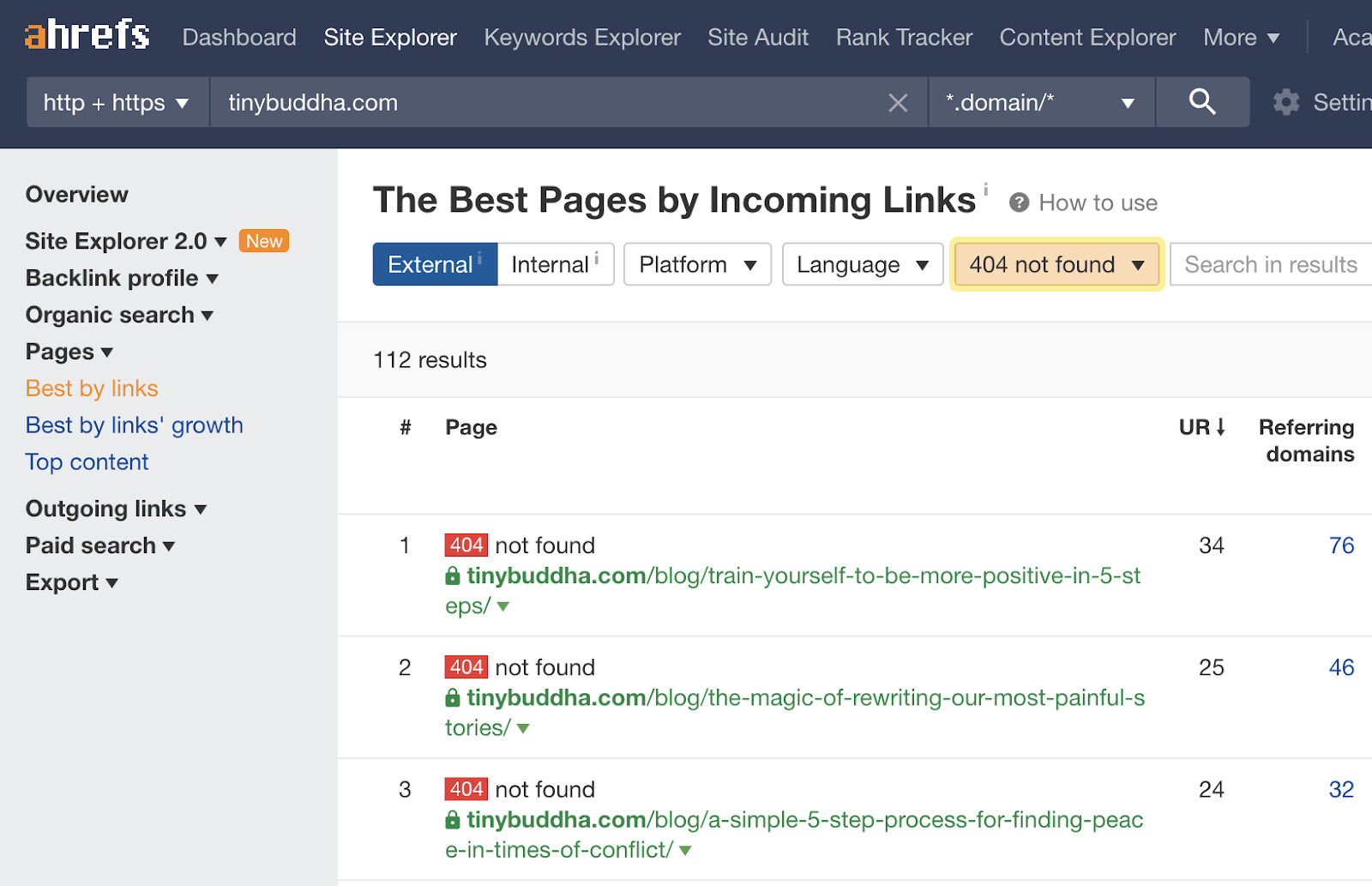
Redirect these pages to working, relevant URLs where appropriate—especially the ones with backlinks.
Pay attention to keyword intent and freshness
Google explains to raters in the Mobile User Needs section that search intent can change over time or based on the searcher’s location.
For instance, the term “football” means something completely different in the U.S. vs the rest of the world. The below is taken directly from the quality rater guidelines:

For SEOs, be sure to consider the changing meaning of your keywords and make sure that your results maintain relevance (aka quality) at any given time.
If you are a website that sells hats, you need to know that a search for “hats” in the summer in the U.S. may yield a baseball cap, whereas the same search in the winter may yield knit caps. So you’ll either want to swap out inventory accordingly or create unique pages for each.
If you have a post about marketing conferences, users will most likely want the most recent marketing conferences, so you’ll want to keep your post up to date.
Google includes this in the Mobile User Needs section because it is pushing every site to be mobile-first, but it’s worth noting that aligning your content with search intent is important across all devices.
Final thoughts
Google isn’t hiding much in these quality rater guidelines. As a result, you’ll find that most of what I’ve talked about overlaps with quality guidelines that Google lists for Webmasters.
But, after reading 172 pages, a few things were abundantly clear to me:
- Google wants its algorithm to reward high-quality content and avoid malicious or thin content.
- High-quality content isn’t content that just “looks good”; it also needs to be helpful.
- Site reputation doesn’t stop at the site level—off-page factors likely play a bigger role in Google’s algorithm than we thought.
Lastly and most importantly, by hiring human beings as quality checkers, Google understands that it’s still important to maintain a human element in your content workflow. It can be easy to fall prey to scaling content with cheap talent or AI-generated copy. But at the end of the day, the content that Google wants its algorithm to reward is content created by human beings for human beings.



